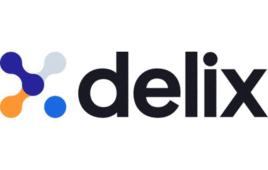
From left to right: the NMDA and AMPA receptors transport calcium cations into neurons after being activated by the neurotransmitter glutamate and the GABA receptor (right) transport chloride anions after the activation by gamma aminobutyrate. [Adobe Stock]
Gate’s approach to event-driven pharmacology
The company’s chief scientific officer, Dr. Anantha Shekhar, noted that the approach has gained ground in oncology. He also emphasized the complexity of the approach, which he compared to handling a nuclear reaction. “How can we trigger a reaction in a precise and controlled manner to ensure it behaves as desired — neither too much nor too little?” he asked. “Such a reaction can either produce beneficial energy or potentially obliterate everything. Striking that balance is the challenge.” The event-driven model is more straightforward in oncology, he said, where “you’re essentially going nuclear, aiming to obliterate the rogue cells.”

Dr. Anantha Shekhar
Drawing a parallel between oncology and neurology, Dr. Shekhar, also the senior vice chancellor for the health sciences and the dean of the school of medicine at the University of Pittsburgh, explained the relation of event-driven pharmacology and cancer cells functions. “[Cancer cells] are blocking cell division by blocking the cellular event that makes cells keep growing. Similarly, in terms of synaptic plasticity, what we’re trying to do is manipulate those events that either reduces neurons connecting or increases neurons connected,” he noted.
Insights into mood disorders and neural plasticity
Mood disorders, including depression, are associated with diminished neural plasticity. Synaptic plasticity, a notion popularized in recent decades, relates to how neurons communicate and form connections. Historically, synaptic plasticity was primarily associated with memory and learning, and conditions like anxiety, phobias, and PTSD that stem from learned responses.
The notion of using drugs to promote neural plasticity could be a less disruptive approach than electroconvulsive therapy (ECT). “How does just shocking the heck out of the brain and scrambling all the circuits improve depression?” Shekhar asked. The procedure also can temporarily scramble memory, but the depression relief from ECT belies its continued use. “It is a crude way of ‘resetting’ plasticity and hard to pinpoint the direct mechanism since you’re practically releasing every neurotransmitter in the brain during the therapy,” Shekhar said.
The idea of using drugs to spur neuroplasticity took flight when the ketamine and NMDA receptor blockade research began in the 1990s. As this pharmacological approach matured, it paved the way for more refined strategies, and thus, the event-driven model is becoming more popular in psychiatric drug development as well, as researchers now understand the impact a single dose of a drug like ketamine can have on synaptic plasticity, given their ability to trigger a series of intracellular mechanisms. “It doesn’t matter if ketamine sticks around for 30 minutes or five hours,” Shekhar said. “You have activated that downstream pathway.”
Zelquistinel and apimostinel: Gate’s leading compounds
The approach is evident in Gate’s pipeline, which features zelquistinel and apimostinel. By focusing on NMDA receptor modulation, these compounds can make use of an event-driven pharmacological approach. With just a single or infrequent dose, Gate aims to give patients sustained antidepressant effects, potentially freeing them from traditional daily dosing regimens.
The former is in a phase 2 trial while the latter is in phase 2a. By focusing on NMDA receptor modulation, these compounds are based on an event-driven pharmacological approach. With just a single or infrequent dose, the company aims to impart sustained antidepressant effects, in contrast to traditional daily dosing regimens.
Gate’s lead asset is zelquistinel, a third-generation NMDA receptor modulator, previously known as AGN-241751. In 2018, the drug won FDA Fast Track Designation as part of Allergan’s broader strategy to develop rapid-acting antidepressants. The company acquired the drug, as well as rapastinel, a selective modulator of the NMDA receptor. Despite initial promise, both drugs would encounter clinical trial roadblocks. Rapastinel failed to differentiate from placebo while AGN-24-1751 showed minimal difference in efficacy compared to placebo over a 3-week timeframe in the NCT03586427 phase 2 study.
Gate, drawing expertise from former staff of Naurex, aims to continue to build and validate the data package and dose model underlying this class of NMDAR molecules.
The challenges and promise of NMDA receptor modulation
NMDA receptor modulation for mood disorders has attracted significant drug development attention but has faced challenges despite its potential For instance, Atai Life Sciences’ ketamine-based therapy failed to outperform a placebo in trials leaving its stock reeling in early 2023. Similarly, Relmada Therapeutics’ drug candidate REL-1017 for major depressive disorder showed depression severity score reductions almost on par with placebo results in a Phase 3 trial in late 2022. Similarly, Ketabon GmbH recently released top-line results from its phase 2 KET01-02 study of its slow-release formulation of oral ketamine for treatment-resistant depression. The results at day 21 were not statistically significant.
The company believes that zelquistinel could provide relief to patients with major depressive disorder (MDD) while IV-based apimostinel could provide immediate relief to patients with severe depressive or suicidal ideation. “Both apimostinel and zelquistinel represent what I’d consider the third generation of these compounds,” Shekhar said. “We believe that developing both of these compounds will greatly expand the options available to physicians, equipping them to handle both life-threatening acute situations and the persistent menace of chronic depression.”
A phase 2 study of zelquistinel is planned to launch in the fourth quarter of the year. The company’s board has granted approval to proceed, and the FDA has also given its stamp of approval on the trial design. The company aims to wrap up the study by next summer.
The role of EEG biomarkers in drug development
Through pioneering use of EEG biomarkers, Gate Neurosciences is optimizing dose levels in a manner that differs from traditional psychiatric drug development. “The right dosage, which brings about an antidepressant effect, also results in a notable increase in the alpha frequency in the frontal cortex,” Shekhar said.
Using EEG biomarkers in drug development is not necessarily easy. “The data isn’t as straightforward as one might hope,” Shekhar said. For one thing, EEG data is complex. Individuals’ EEG readings might differ whether their eyes are closed or open because the brain continuously processes information. But awake closed-eye individuals with depression often show a decline in alpha frequency at baseline. “Some studies note a rise in delta waves, others in beta, but there’s a consistent observation of a decrease in alpha activity in depression,” Shekhar added. “One might theorize that the presence of alpha activity indicates a stable mood – not necessarily happiness or sadness, but a balanced, calm state. Depressed patients typically exhibit a diminished calm state.”
Filed Under: clinical trials, Drug Discovery, Psychiatric/psychotropic drugs, Uncategorized



